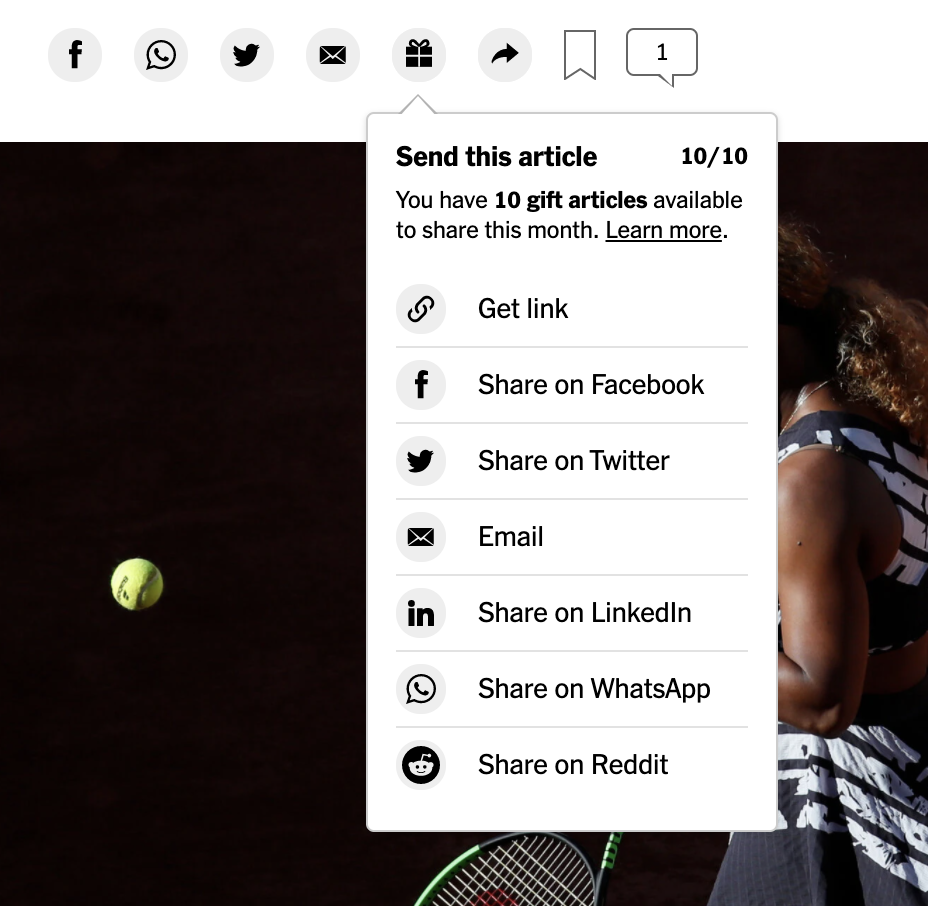
The New York Times is offering subscribers the ability to “gift” 10 articles per month to the non-subscribers in their life.
The gift feature became available to a majority of news subscribers on web last week, said New York Times product director Anna Mancusi. All subscribers will have access by August and the Times plans to add the gift button to its news apps (iOS and Android) soon, too.
Subscribers can find the gift button alongside other social and email share options. The gifted articles won’t count towards the limited number of articles that non-subscribers can click before hitting a paywall and recipients have 14 days to read ’em.

The Times is only making the offering to news subscribers — not those who only have standalone Cooking or Games subscriptions — but if a reader finds an article they love, they don’t have to be stingy. “Once you’ve shared an article, you can continue to share the same article with multiple recipients for the remainder of the calendar month without it counting toward your overall monthly allotment,” according to the paper’s help center.
Mancusi called gift articles “one of our first subscriber-only features” and the emphasis on “gifts” rather than, say, links or shares seems designed to underline that it’s an added value for those paying for the Times. (The Wall Street Journal and The Information, among others, allow subscribers to share articles to non-subscribers for free, but don’t use the “gift” framing. The Financial Times, meanwhile, introduced a “gift” feature way back in 2013.)
The New York Times tested the idea with a subset of users back in 2020. Based on how often those initial subscribers used the feature (and feedback they solicited through user research), the Times decided to roll it out more widely.
Mancusi said it was too early to determine whether gift recipients were more likely to convert to subscribers, but said the Times could already say they were, at least, more likely to cough up their email to register at nytimes.com.
“We know that non-subscribers who come to our site from a link that was shared with them are more likely to start a relationship with us by registering, compared to those who arrive on site via other avenues,” she said. “We will be monitoring registration and conversion rates for gift article recipients, as well as subscriber sharing behavior and retention, in the weeks and months to come.”